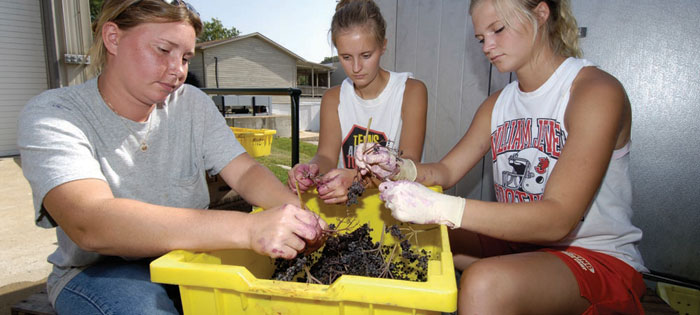Student Opportunities and Services

Expanding knowledge through experiences
Research opportunities
As a student in the MNAS program, you will have the opportunity to research with faculty
members in your areas of emphasis. There are many centers related to the University
that provide MNAS students the chance to work on research and environmental
studies outside of the classroom. The facilities and resources page provides additional information on research centers and institutes at Missouri
State.
See a sampling of the ground-breaking research by graduate faculty in your program.
Internships
It is recommended that you participate in professional development opportunities in the MNAS program. Internships are a great way to network, as well as learn more about prospective employers and careers. Many MNAS students find internships at businesses, non-profit organizations and governmental agencies. There are several companies that have hired interns in various emphasis areas of the MNAS program, including 3M, ANPAC Insurance and Jack Henry. Students enrolled in the PSM option are required to complete an internship. View a list of companies that could be used for internships.
Career services
The Career Center can also provide you with additional information on careers and internships related to your areas of emphasis.
Interdisciplinary forum
The Interdisciplinary Forum is hosted by the Graduate College each spring. This forum features research presentations from graduate students and faculty from around the University, as well as universities around the area. You will have the opportunity to present and showcase the research that you complete during your time in the MNAS program.
Theses
Many graduate students prepare thesis projects throughout the University that are related to their academic and professional interests. Below you will find examples of recent graduate work in the sciences:
Biology
- “Examination of the cytotoxicity of carboxyl functionalized single-walled carbon nanotubes on Escherichia Coli” by Brittany Linn Twibell, 2015 (Chair: Paul Schweiger)
- “Ozark Big-Eared Bat (Corynorhinus Townsendii Ingens) Oklahoma Maternity Population Trend Analysis and Videography Methodology Comparison” by Brian Charles Fuller, 2015 (Chair: Tom Tomasi)
- “Outdoor aquatic education programs at the Watershed Center and their effect on student comfort in the outdoors” by Brandi Silvey, 2016 (Chair: Janice Greene)
Geography, Geology, and Planning
- “Stream Bank Erosion Trends and Sediment Contributions in a Southwestern Missouri River” by Ezekiel Allen Kuehn, 2015 (Chair: Robert Pavlowsky)
- “Seismic Reflection, Well Log, And Gravity Analysis Of The Thrace Basin, Northwestern Turkey” by Murat Kuvanc, 2016 (Chair: Kevin Mickus)
- “Spatial Distribution And Geomorphic Factors Of Lead Contamination On Floodplains Affected By Historical Mining, Big Rover, S.E. Missouri” by David Bower Huggins, 2016 (Chair: Robert Pavlowsky)
- “Petrography and Geochemistry of Oligocene Rhyolitic Volcanic Rocks, Western Mogollon-Datil Volcanic Field, New Mexico” by Emily Elizabeth Salings, 2017 (Chair: Gary Michelfelder)
- “A Geophysical Analysis of the Great Falls Tectonic Zone and the Surrounding Area, Montana USA” by Travis Lane Fultz, 2017 (Chair: Kevin Mickus)
Computer Science
- “Using Virtual Reality to Improve Sitting Balance” by Alice Kay Barnes, 2017 (Chair: Lloyd Smith)
- “Comparing Three Pulsating Subdwarf B Stars Observed by Kepler in the Open Cluster NGC 6791” by Joshua William Kern, 2018 (Chair: Michael Reed)